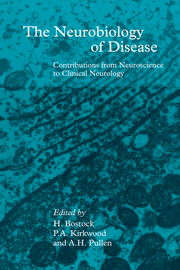Preface
Published online by Cambridge University Press: 04 August 2010
Summary
Clinical neurology and the neurosciences can interact in various ways. Investigators often start from a given disease or clinical condition and ask ‘What is the cause of this disorder?’, with the hope that having identified the cause the way will be open to devise a remedy. Though apparently straightforward, this approach can be fraught with difficulty. The aetiology of neurological conditions is often so obscure that it is not evident which discipline, whether biochemistry, electrophysiology, immunology or epidemiology, is going to give the critical lead, so all must be supported. Only for inherited conditions has this approach been conspicuously successful, where recent advances in genetics and molecular biology have in several cases provided a quick path to the first stage of identifying the cause.
An alternative approach is to put science first: to ask fundamental questions about the workings of the nervous system, but to ensure that the scientific questions are always relevant to neurological ones. Not only may the science then help the neurologist, but clinical observations may help illuminate the science. This is the approach exemplified by most of the contributors to this book, and is also the approach of Tom Sears, to whom the book is dedicated. This alternative approach is well illustrated by his work on nerve conduction and demyelination, which underpins several of the chapters. In pioneering experiments with McDonald, using focal experimental demyelination with diphtheria toxin, he first showed that individual central nerve fibres could remain intact through a demyelinated region, with unimpaired conduction above and below the lesion, while transmission of impulses through the lesion was blocked or proceeded with a reduced safety factor.
- Type
- Chapter
- Information
- The Neurobiology of DiseaseContributions from Neuroscience to Clinical Neurology, pp. xvii - xxPublisher: Cambridge University PressPrint publication year: 1996

